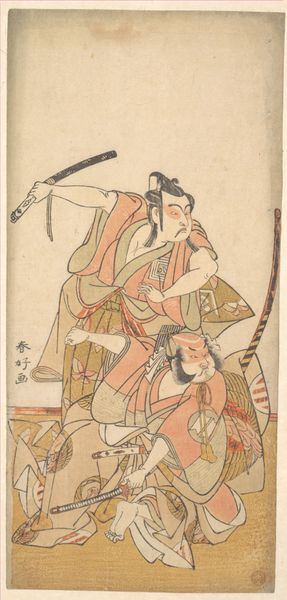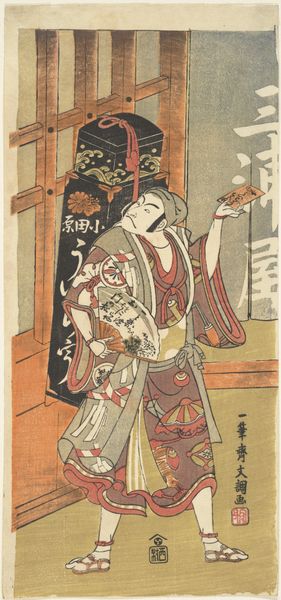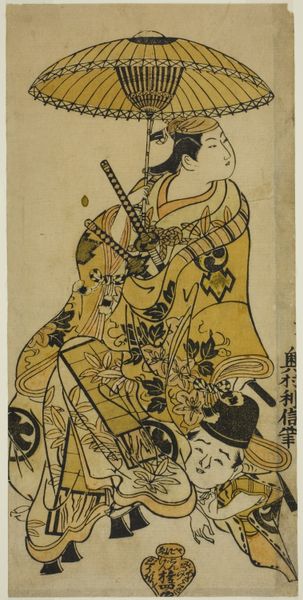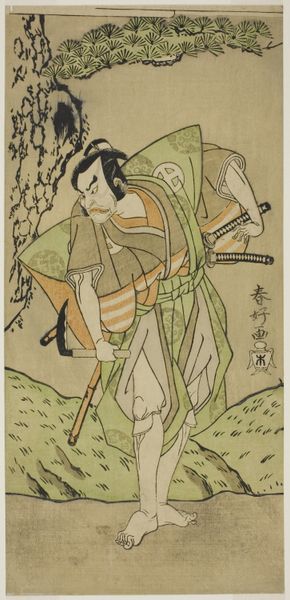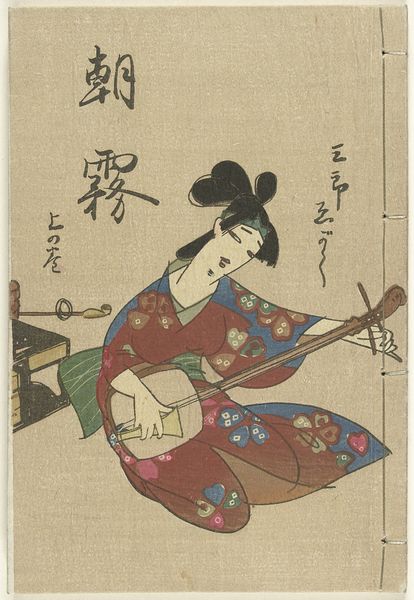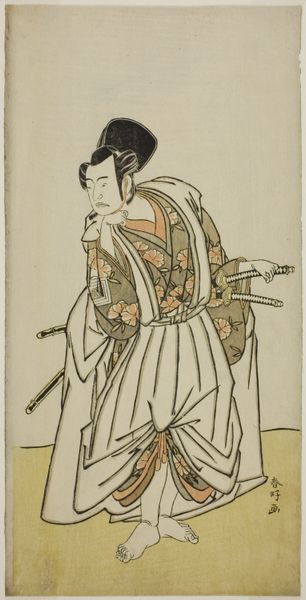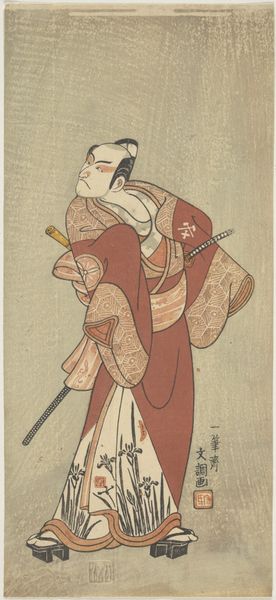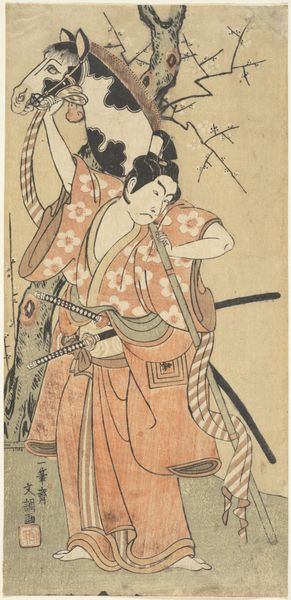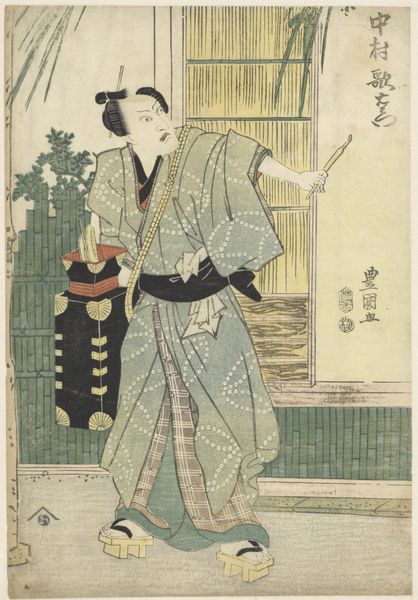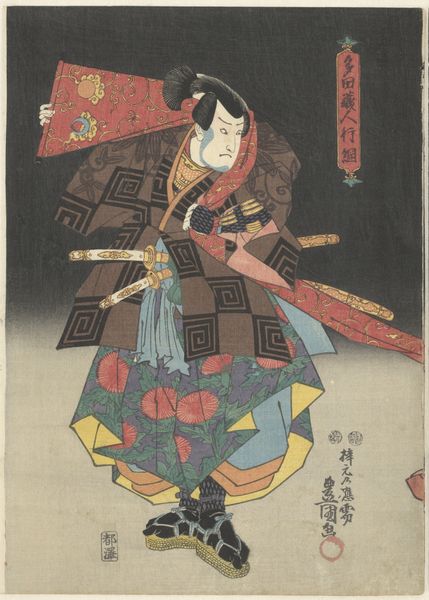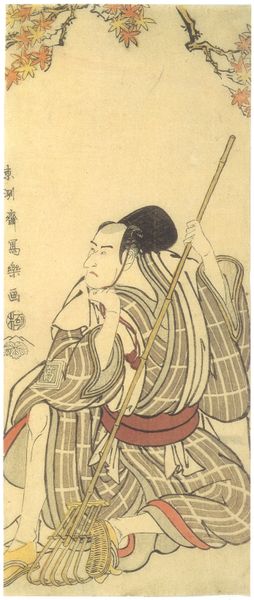
The Actor Ichikawa Komazo I as Yorimasa 1770
0:00
0:00
print, woodcut
# print
#
asian-art
#
ukiyo-e
#
figuration
#
woodcut
Dimensions: 12 5/8 x 5 3/4 in. (32.1 x 14.6 cm)
Copyright: Public Domain
Curator: This print, housed here at the Met, is "The Actor Ichikawa Komazo I as Yorimasa" by Ippitsusai Bunchō, created around 1770. Editor: The actor’s upward gaze gives it such a poignant feel. His stiff posture and pallid face are stark, it almost reads like a ghostly premonition. Curator: Woodblock printing in this ukiyo-e style involves a fascinating layering of labor. The artist designed the image, but then specialized block cutters and printers would bring it to life. The choice of wood, the pigments used, all speak to a complex material process intended for mass consumption. Editor: Yes, but look at how Bunchō uses those details! The actor is playing Yorimasa, a real historical figure known for his skill as an archer and his tragic loyalty. The hawk above – traditionally a symbol of martial prowess - clinches that air of expectation and inevitable fate. It makes you wonder about cultural ideals, duty and honor. Curator: It's remarkable to consider how that ideal would then translate into commerce. These prints were relatively inexpensive, allowing for wide distribution and shaping a collective identity through imagery anyone could access. Editor: The choice of colors contributes to the symbolism too. The soft greens and browns emphasize the connection to nature and add a subdued emotional tone that hints at Yorimasa's impending doom, as well as referencing particular conventions of color associated with his class. It invites you to question how popular heroes are often made out to be. Curator: Precisely. And examining the tools of the trade itself allows us to trace the shifting market demands, aesthetic trends and accessibility of various forms of expression over time. Even something like paper quality helps us understand the resources and networks at play. Editor: A good reminder to really observe what the objects are suggesting beyond their surface appeal. Looking through a symbolic lens truly unlocks layers of storytelling. Curator: I think we can agree the intersection of technique, audience, and material history tells us just as much about a work as does its iconic meaning. Editor: Definitely food for thought on the stories art tell and the layers from which these are derived.
Comments
No comments
Be the first to comment and join the conversation on the ultimate creative platform.
